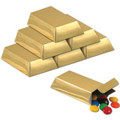
Spyglasses are revealed at Minecraft Live 2020. Look at the Ender Dragon through a spyglass Look at a ghast through a spyglass while the ghast is focused on you. If the player has a certain effect on their screen like fire, the spyglass does not remove that effect on the player's screen. When the player uses the spyglass continuously for 1 minute (1200 game ticks), the interface is automatically closed. The player is slowed down while watching through the spyglass. The spyglass shows a magnified view of what the player already sees. Mobs too distant to render also do not render in the spyglass. Hazy distant objects remain hazy when viewed in the spyglass. Pressing F1 removes the vignette, similar to a carved pumpkin. Regardless of the situation, or status effects the player has, using the Spyglass always shows a FOV 1⁄ 10 of the FOV set in options.Ī square vignette is applied when in use, similar to the effect when wearing a carved pumpkin. The player's FOV can be set from 30° to 110°, so the spyglass FOV can range from 3° to 11°. By default, the FOV is set to 70° in Java Edition and 60° in Bedrock Edition, resulting in an FOV of 7° in Java Edition and 6° in Bedrock Edition through the spyglass. The spyglass changes the FOV to 1⁄ 10 of the FOV set in options. Spyglasses are used to zoom in on a specific location in the player's field of view (FOV).

It is amazing what they can do when they have a big piece of paper to draw on.To use a spyglass, the player selects it from the hotbar and clicks use while looking in the desired direction. Give them a big piece of paper (about 16″ x 24″) and have them draw a ship with as many details as possible (we will also do guided drawing before we go to paper). Pirate ship pencil drawings – After you have looked at pictures of pirate ships in books (or online) with your students, brainstorm all the things that a pirate ship needs. I give my students big paper (12″ X 18″) to draw on and we use oil pastels to colour them (Kindergarten students have great success with pastels and love the ease of adding bright colours to their art work).ġ. Before we go to paper, we do guided drawing activities on white boards. Once dry, put them in your paper bag treasure chest for safe keeping!Ģ. Pirate pastel pictures – Once we have done lots of pirate crafts and built our pirate language and vocabulary, we transfer this knowledge to drawing pirates. Once cooked, paint with gold acrylic paint and finish with glitter. Texture and details can beaded to the “treasure” using things like thread spools, screws, nuts and bolts, nails, etc. Have students roll the dough and cut it into circles (we use water glasses). For complete instructions, please click here.ģ. Paper bag treasure chests – These are quite simple to do. Once dry, my students crumpled them up to make them look really old and some added little rips around the edges.Ĥ. (You can also dye them using tea however they need to soak in the tea for a while and this can be less efficient if you are working with a classroom of children). When they are done drawing, have them paint their maps with watered down brown paint, then rinse them in a bucket (or sink of water) and then leave to dry. Treasure maps – Have students draw their treasure maps with wax crayons. When doing threading activities with string, try wrapping masking tape around the end of the string to prevent fraying. Our pirates hang their tin foil loop earrings around their ear with an elastic band and we use dyed pasta to make our necklaces.

Noodle necklaces & tin foil earrings – Every good pirate needs some jewels. For this one, I mixed the white glue into the yellow paint so that students could dip the ends of their telescope into glitter (and have it stick) once they are done painting.Ħ. Telescopes – All you need for this is a paper towel roll, some paint, glitter and some white glue. Push about 3″ of the tinfoil hook through the “X ” in the cup to create a “handle” to hold on to on the inside of the cup.ħ. Hooks – Roll a 12″ piece of tinfoil up, squeeze it to form a tight “rod” and shape that rod into a hook. Take a cup (we used black paper cups here) and cut an “X” in the bottom.
PIRATE TELESCOPE TEMPLATE PATCH
I make a patch tracer out of cardboard for my students to use as tracing is a great 2-handed activity for developing hand dominance and building fine motor skills.Ĩ. Eye patches – These super quick and easy! All you need is a small piece of paper, some string and some tape. Fit to each student’s head and staple strip into a loop.ĩ. Once students have coloured and cut out their hats, staple them in the middle of a 2″ x 24″ strip, leaving about 2″ of the hat brim unattached on each side. Pirate hats – Print and copy the pirate hat template from on 8.5″ x 14″ paper.


 0 kommentar(er)
0 kommentar(er)
